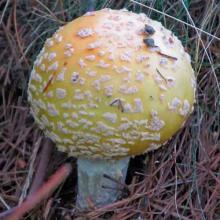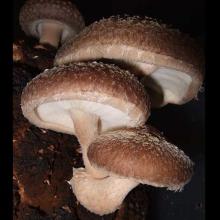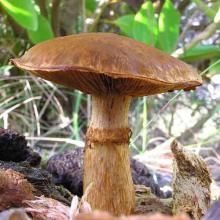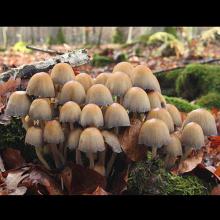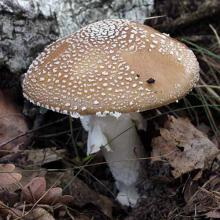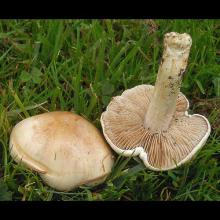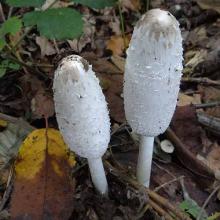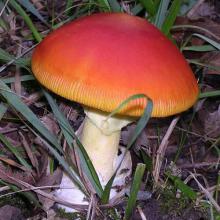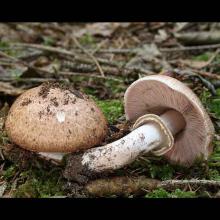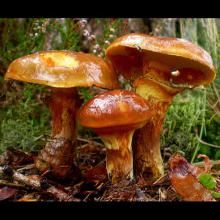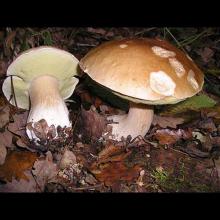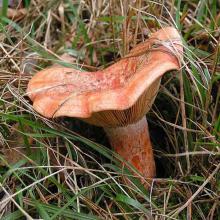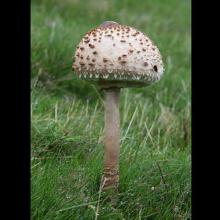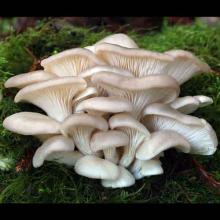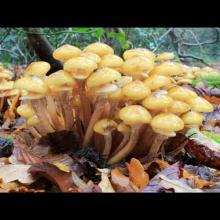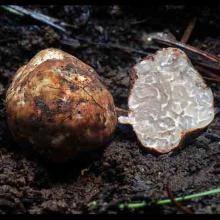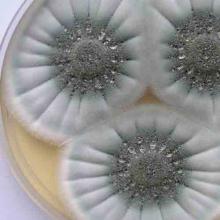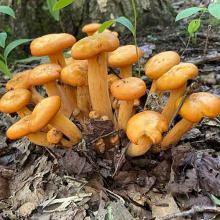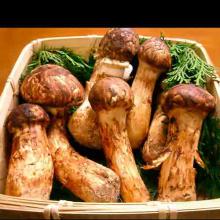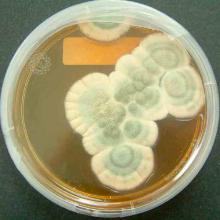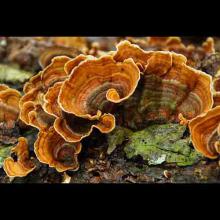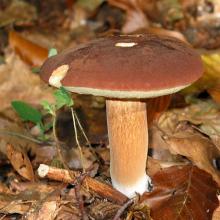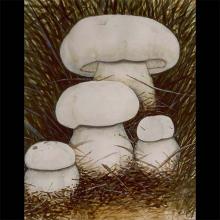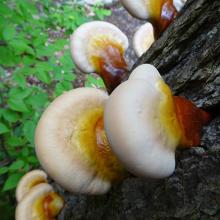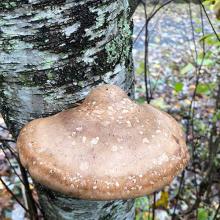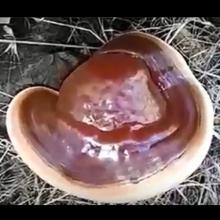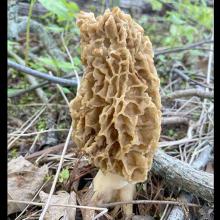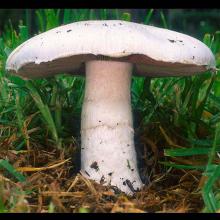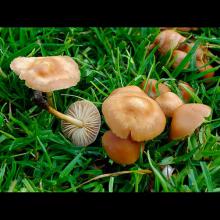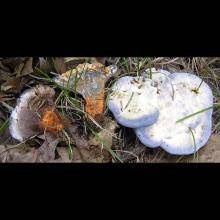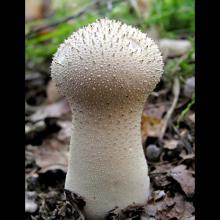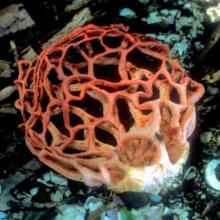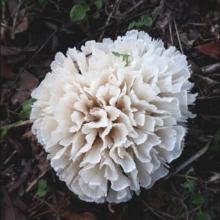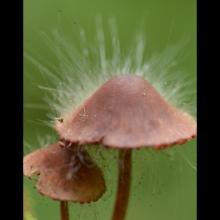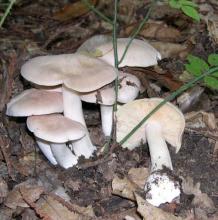Amanita muscaria
Common name:
Fly agaric
Order:
Agaricales
Phylum:
Basidiomycota
Kingdom:
Fungi
Cantharellus cibarius
Common name:
Chanterelle
Order:
Cantharellales
Phylum:
Basidiomycota
Kingdom:
Fungi
Lentinula edodes
Common name:
Shiitake mushroom
Order:
Agaricales
Phylum:
Basidiomycota
Kingdom:
Fungi
Gymnopilus junonius
Common name:
Spectacular rustgill
Order:
Agaricales
Phylum:
Basidiomycota
Kingdom:
Fungi
Coprinellus micaceus
Common name:
Mica cap
Order:
Agaricales
Phylum:
Basidiomycota
Kingdom:
Fungi
Amanita pantherina
Common name:
Panther cap
Order:
Agaricales
Phylum:
Basidiomycota
Kingdom:
Fungi
Hebeloma crustuliniforme
Common name:
Poison pie
Order:
Agaricales
Phylum:
Basidiomycota
Kingdom:
Fungi
Coprinus comatus
Common name:
Shaggy ink cap
Order:
Agaricales
Phylum:
Basidiomycota
Kingdom:
Fungi
Amanita caesarea
Common name:
Caesar's mushroom
Order:
Agaricales
Phylum:
Basidiomycota
Kingdom:
Fungi
Agaricus silvaticus
Common name:
Scaly wood mushroom
Order:
Agaricales
Phylum:
Basidiomycota
Kingdom:
Fungi
Suillus grevillei
Common name:
Greville's bolete
Order:
Boletales
Phylum:
Basidiomycota
Kingdom:
Fungi
Boletus edulis
Common name:
Porcini
Order:
Boletales
Phylum:
Basidiomycota
Kingdom:
Fungi
Lactarius deliciosus
Common name:
Saffron milk cap
Order:
Russulales
Phylum:
Basidiomycota
Kingdom:
Fungi
Macrolepiota procera
Common name:
Parasol mushroom
Order:
Agaricales
Phylum:
Basidiomycota
Kingdom:
Fungi
Pleurotus ostreatus
Common name:
Oyster mushroom
Order:
Agaricales
Phylum:
Basidiomycota
Kingdom:
Fungi
Armillaria mellea
Common name:
Honey fungus
Order:
Agaricales
Phylum:
Basidiomycota
Kingdom:
Fungi
Tuber gibbosum
Common name:
Oregon white truffle
Order:
Pezizales
Phylum:
Ascomycota
Kingdom:
Fungi
Penicillium roqueforti
Common name:
Roquefort cheese
Order:
Eurotiales
Phylum:
Ascomycota
Kingdom:
Fungi
Omphalotus illudens
Common name:
Jack-o'lantern
Order:
Agaricales
Phylum:
Basidiomycota
Kingdom:
Fungi
Tricholoma matsutake
Common name:
Pine mushroom
Order:
Agaricales
Phylum:
Basidiomycota
Kingdom:
Fungi
Penicillium chrysogenum
Common name:
Penicillin
Order:
Eurotiales
Phylum:
Ascomycota
Kingdom:
Fungi
Agaricus bisporus
Common name:
White mushroom
Order:
Agaricales
Phylum:
Basidiomycota
Kingdom:
Fungi
Trametes versicolor
Common name:
Turkey tail
Order:
Polyporales
Phylum:
Basidiomycota
Kingdom:
Fungi
Inonotus obliquus
Common name:
Chaga
Order:
Hymenochaetales
Phylum:
Basidiomycota
Kingdom:
Fungi
Imleria badia
Common name:
Bay bolete
Order:
Boletales
Phylum:
Basidiomycota
Kingdom:
Fungi
Tricholoma mongolicum
Common name:
Mongolian row
Order:
Agaricales
Phylum:
Basidiomycota
Kingdom:
Fungi
Ganoderma tsugae
Common name:
Hemlock varnish shelf
Order:
Polyporales
Phylum:
Basidiomycota
Kingdom:
Fungi
Fomitopsis betulina
Common name:
Birch polypore
Order:
Polyporales
Phylum:
Basidiomycota
Kingdom:
Fungi
Ganoderma lucidum
Common name:
Bracket fungus
Order:
Polyporales
Phylum:
Basidiomycota
Kingdom:
Fungi
Morchella esculenta
Common name:
Common morel
Order:
Pezizales
Phylum:
Ascomycota
Kingdom:
Fungi
Agaricus campestris
Common name:
Field mushroom
Order:
Agaricales
Phylum:
Basidiomycota
Kingdom:
Fungi
Marasmius oreades
Common name:
Fairy ring mushroom
Order:
Agaricales
Phylum:
Basidiomycota
Kingdom:
Fungi
Hydnellum caeruleum
Common name:
Blue tooth
Order:
Thelephorales
Phylum:
Basidiomycota
Kingdom:
Fungi
Lycoperdon perlatum
Common name:
Common puffball
Order:
Agaricales
Phylum:
Basidiomycota
Kingdom:
Fungi
Geastrum campestre
Common name:
Earthstar fungi
Order:
Geastrales
Phylum:
Basidiomycota
Kingdom:
Fungi
Clathrus chrysomycelinus
Common name:
(none)
Order:
Phallales
Phylum:
Basidiomycota
Kingdom:
Fungi
Irpex rosettiformis
Common name:
Poretooth rosette
Order:
Polyporales
Phylum:
Basidiomycota
Kingdom:
Fungi
Spinellus fusiger
Common name:
Bonnet mold
Order:
Mucorales
Phylum:
Mucoromycota
Kingdom:
Fungi
Entoloma sinuatum
Common name:
Livid entoloma
Order:
Agaricales
Phylum:
Basidiomycota
Kingdom:
Fungi
Kingdom: Fungi
A fungus (plural: fungi or funguses) is any member of the group of eukaryotic organisms that includes microorganisms such as yeasts and molds, as well as the more familiar mushrooms. These organisms are classified as a kingdom, which is separate from the other eukaryotic life kingdoms of plants and animals.
A characteristic that places fungi in a different kingdom from plants, bacteria, and some protists is chitin in their cell walls. Similar to animals, fungi are heterotrophs; they acquire their food by absorbing dissolved molecules, typically by secreting digestive enzymes into their environment. Fungi do not photosynthesize. Growth is their means of mobility, except for spores (a few of which are flagellated), which may travel through the air or water. Fungi are the principal decomposers in ecological systems. These and other differences place fungi in a single group of related organisms, named the Eumycota (true fungi or Eumycetes), which share a common ancestor (from a monophyletic group), an interpretation that is also strongly supported by molecular phylogenetics. This fungal group is distinct from the structurally similar myxomycetes (slime molds) and oomycetes (water molds). The discipline of biology devoted to the study of fungi is known as mycology (from the Greek μύκης mykes, mushroom). In the past, mycology was regarded as a branch of botany, although it is now known fungi are genetically more closely related to animals than to plants.
Abundant worldwide, most fungi are inconspicuous because of the small size of their structures, and their cryptic lifestyles in soil or on dead matter. Fungi include symbionts of plants, animals, or other fungi and also parasites. They may become noticeable when fruiting, either as mushrooms or as molds. Fungi perform an essential role in the decomposition of organic matter and have fundamental roles in nutrient cycling and exchange in the environment. They have long been used as a direct source of human food, in the form of mushrooms and truffles; as a leavening agent for bread; and in the fermentation of various food products, such as wine, beer, and soy sauce. Since the 1940s, fungi have been used for the production of antibiotics, and, more recently, various enzymes produced by fungi are used industrially and in detergents. Fungi are also used as biological pesticides to control weeds, plant diseases and insect pests. Many species produce bioactive compounds called mycotoxins, such as alkaloids and polyketides, that are toxic to animals including humans. The fruiting structures of a few species contain psychotropic compounds and are consumed recreationally or in traditional spiritual ceremonies. Fungi can break down manufactured materials and buildings, and become significant pathogens of humans and other animals. Losses of crops due to fungal diseases (e.g., rice blast disease) or food spoilage can have a large impact on human food supplies and local economies.
The fungus kingdom encompasses an enormous diversity of taxa with varied ecologies, life cycle strategies, and morphologies ranging from unicellular aquatic chytrids to large mushrooms. However, little is known of the true biodiversity of Kingdom Fungi, which has been estimated at 2.2 million to 3.8 million species. Of these, only about 120,000 have been described, with over 8,000 species known to be detrimental to plants and at least 300 that can be pathogenic to humans. Ever since the pioneering 18th and 19th century taxonomical works of Carl Linnaeus, Christian Hendrik Persoon, and Elias Magnus Fries, fungi have been classified according to their morphology (e.g., characteristics such as spore color or microscopic features) or physiology. Advances in molecular genetics have opened the way for DNA analysis to be incorporated into taxonomy, which has sometimes challenged the historical groupings based on morphology and other traits. Phylogenetic studies published in the first decade of the 21st century have helped reshape the classification within Kingdom Fungi, which is divided into one subkingdom, seven phyla, and ten subphyla.
Reference: Wikipedia

